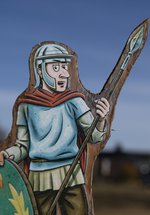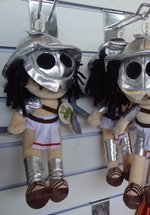To the Roar of the Crowd
Exhibition exploring popular Roman spectator sports that still capture our imagination today

Dates
Until 2 November 2023 (historic exhibition)
About the exhibition
Gladiator fights and chariot-races are well-known aspects of Roman civilisation that still appeal to the public imagination today. They were popular spectator sports and, like big sporting events nowadays, involved large crowds, passionate supporters and prize money for the successful. Scenes from fights or racing were used as decoration around the house, such as mosaics and wall-paintings or on bowls, drinking glasses, knife-handles and lamps, as well as on items of jewellery like signet rings and brooches. To the Roar of the Crowd looks at some of these items in everyday use, and what they can tell us about the world of the games.
The exhibition examines all the roles involved in spectator sports, from those who organised the event and the owners of the gladiators, to the participants in the spectacle, which included not only gladiators, but wild animals, criminals and musicians. Visitors can find out about the different types of gladiators, their weapons and equipment, and learn about the experiences of charioteers, and the rituals of arena and circus.
Featuring loans from private collectors.
The exhibition also features visuals by 3D artist, Neil Brewis, originally from South Shields and currently Course Leader in Computer Games Art at Solent University, Southampton. Neil’s research interests are digital reconstructions of Roman archaeological sites, and for the past ten years he has created animations and augmented reality simulations for sites and museums in the UK and Italy.
Image: Lamp featuring the hoplomachus (Greek warrior) to the left holding up his shield in victory while the Thraex (Thracian) to the right kneels in defeat.







